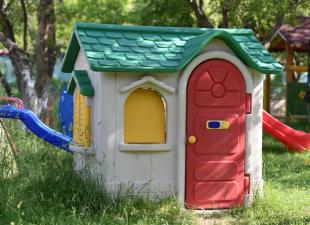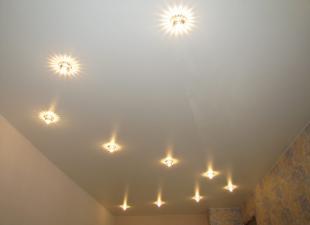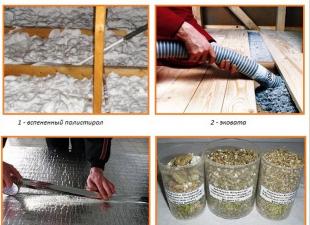Previously, for a stable supply of water to a private house, a pump was used complete with a storage tank located in the attic. Or just a pump.
The first option does not provide sufficient pressure of water entering the system by gravity, and the second is fraught with a quick failure of the water-lifting equipment. Modern pumping stations for autonomous water supply solve both problems, and make life in your home as comfortable as possible.
How they are arranged, what they consist of and how they work, we will tell you in this article.
Device and main units
A modern person can no longer do without a daily shower and an automatic washing machine. And this is the minimum. Many people install dishwashers, bidets, hydromassage baths in the house. And these devices need good and stable pressure in the network (see).
If the source of water is a well or a well, the best solution would be to install equipment for autonomous water supply at home in the form of a household pumping station.
What does the pumping station consist of?
The composition of such equipment most often includes: with a membrane tank and a suction hose, as well as devices for automatic control of the pressure in the network and its regulation.

Each of these elements of the system performs its own function:
- The filter prevents large sand particles from entering the system;
- The check valve retains water in the suction line, preventing it from flowing back to the source;
- Self-contained water supply pumps with an electric motor lift water to the surface and supply it to the distribution system;
- The pressure gauge allows you to control the pressure in the membrane tank, and, if necessary, adjust it manually.
The rest of the elements should be described in more detail. Let's start with the pressure switch.
Pressure switch
This node is responsible for turning the pump on and off when the pressure in the system drops or rises to predetermined levels. The minimum and maximum, respectively.
The main controls are two springs.

So:
- A small spring is responsible for opening the electrical circuit, and turning off the pump motor when the maximum pressure is reached;
- A large spring, on the contrary, closes the circuit when the pressure drops to a critical level, turning on the pump.
Advice. The relay is factory set to allow the valves to withstand a certain pressure without compromising their strength. It is undesirable to change them, but it is quite possible. To do this, you need to slightly tighten or release the springs.

Hydroaccumulator
A membrane tank or a hydraulic accumulator is responsible for a stable pressure in the water supply system (see). It is a sealed metal container with a rubber "bulb" or membrane inside.

So:
- External metal case;
- Internal rubber reservoir;
- Nipple for pumping up or bleeding air;
- The branch pipe through which the autonomous water supply station is connected to the system;
- Air chamber;
- Water in the internal tank;
- Access to the in-house water distribution system;
- Water supply from the pump.
For reference. The accumulator serves not only to maintain pressure, but also to prevent the destructive consequences of water hammer. It dampens excess pressure, preventing it from acting on the walls of pipes and fittings.
The use of diaphragm tanks can significantly extend the service life of the pumps, which directly depends on the number of on and off cycles, and the time elapsed between them. In addition, these tanks provide a supply of water in case of a power outage or insufficient flow rate of the source.
Their choice depends on the main purpose of use:
- If this is the maintenance of pressure and protection against water hammer, then a small tank (5-15 liters) is sufficient;
- If the membrane tank should also play the role of a storage tank, then its volume is determined based on the needs of the family.
Note. The larger the volume of the tank, the less often the pumps for autonomous water supply will be turned on, and the interval between cycles will be sufficient for rest and cooling of the motor.
Remote ejector
Surface pumps are not capable of lifting water from a depth of more than 8-9 meters unless they are equipped with an external ejector. This device allows you to significantly increase the suction lift.
However, the power of the water-lifting equipment decreases at the same time, and they give a lower head at the outlet than the same pump with an internal ejector.
It is clear that the choice depends on the level of water standing in the source. In many cases, it is wiser to choose not between a pump with and without an ejector, but between surface and submersible equipment.
Operating principle
One end of the suction hose is lowered into the well, and the other is connected to a pump connected to a diaphragm tank. During the operation of the pump, water is pumped into the "pear" of the accumulator under pressure through the inlet pipe, forcing it to stretch and increase in volume.

Taking up more and more space inside the tank, the membrane forces the air between it and the metal walls to compress. When its pressure becomes the maximum allowable, the relay turns off the pump, and the flow of water stops.
When you open the water tap, the pump does not turn on immediately, as it happens when it is used outside the pumping station. And water enters the system from a membrane tank under pressure. But as it empties, it begins to fall. And at a certain moment, when the pressure reaches the maximum minimum value, the relay closes the circuit and turns on the pump to pump water into the tank.
Submersible pump station
Factory assembled only stations with surface pumps. If you have a deep well, then an autonomous water supply system with automatic control can be assembled with your own hands from a submersible pump, hydraulic tank and automation. All of these are purchased separately and assembled.
At the same time, you should be aware that for submersible units, the permissible number of starts and stops per hour is usually less than for surface units. Therefore, you need to buy membrane tanks of sufficient volume for them. A large supply of water will allow the automation to respond less often to critical changes in pressure in the network.
The assembly of the station is carried out through a special fitting with five leads, to which are connected:
- A discharge hose or pipeline connected to a pump in a well;
- Pressure switch;
- Pressure gauge;
- Hydroaccumulator;
- Access to the distribution system.
Unlike surface, submersible hydraulic pumps can be both centrifugal and vibrating, vortex or screw.
Where to put the station
The choice of the location of an autonomous water supply station depends on its type, type of pump, seasonality of operation.
- If you use the system only in the summer, preserving equipment and blowing pipes for the winter, then the pipeline can be laid on a surface or shallow. The main thing is that the surface pump is reliably protected from atmospheric precipitation and mechanical damage. This is required by the operating instructions and sound calculation for the long-term operation of the unit.

- If you have a country house with year-round living, the equipment also needs protection from frost. Therefore, it is installed in a heated room (basement, utility block) or in a warmed caisson above the well. And pipes from the source to the house are laid below the level of soil freezing.

Note. Automatic water supply stations during operation emit a rather noticeable noise, therefore they are recommended to be installed in isolated rooms.
All of the above applies to systems with submersible pumps, except that they do not need to be hidden from atmospheric precipitation - they work while submerged in water. They can also be left there for the winter, if the water in the source is at a sufficient depth and does not freeze.
But for ease of maintenance and normal operation of the automation, all other elements must be kept in a dry and warm place. Most often, this is a caisson, arranged directly above the head of the well.
But often a well is drilled right in the house, at the stage of its construction. A similar option was shown above. This greatly facilitates the operation of the station, without requiring the construction of separate insulated shelters for it. But it complicates the maintenance and repair of the well itself.
Conclusion
An autonomous water supply station, consisting of a water-lifting unit, a hydraulic accumulator and automation, is the most modern solution for the stable supply of drinking water to a country house. She herself pumps water from the source, and creates its supply, and controls the pressure in the system, protecting it from water hammer.
With the correct selection and installation of equipment, it works like a clock, practically not requiring attention to itself, and does not need constant monitoring.
If you are not yet familiar with the principle of its operation, we advise you to watch the video in this article and make sure that the high costs compared to buying one pump are quickly paid off by extending its service life and ease of use.
 parlini.ru Repair of an apartment, a summer residence and a house.
parlini.ru Repair of an apartment, a summer residence and a house.


